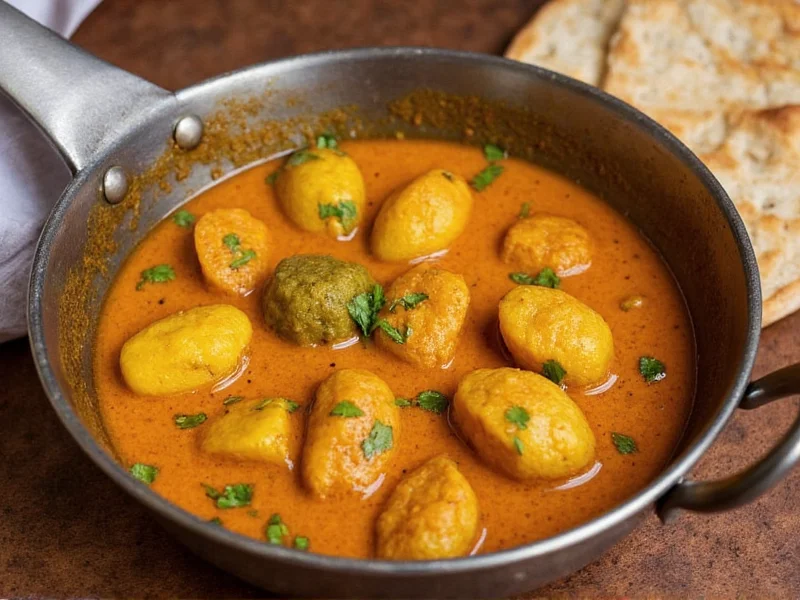When exploring Indian cuisine, few dishes generate as much curiosity and confusion as Madras curry. This vibrant dish represents one of India's most celebrated regional specialties, yet its identity has been reshaped through global interpretation. Understanding what defines authentic Madras curry requires examining its historical roots, distinctive ingredients, and how it differs from Western adaptations.
The Historical Roots of Madras Curry
Madras curry traces its origins to Chennai, the capital city of Tamil Nadu in South India (formerly known as Madras under British rule). The dish emerged from the culinary traditions of Tamil cuisine, which emphasizes rice, lentils, and vegetable-based preparations with distinctive spice combinations. Unlike North Indian curries that often feature dairy-based sauces, traditional Tamil cooking relies on tamarind, tomatoes, and coconut for tanginess and texture.
The British colonial presence in Madras (1639-1947) significantly influenced how this regional dish was perceived globally. British soldiers and officials adapted the local cuisine to suit their palates, creating what would eventually become known as "Madras curry" in Western contexts. This adaptation process led to the development of "Madras curry powder" - a pre-mixed spice blend that bears only partial resemblance to authentic preparation methods.
Authentic Madras Curry Ingredients and Flavor Profile
True Madras curry stands apart through its specific ingredient composition and preparation technique. Key components include:
| Ingredient Category | Authentic Components | Western Adaptations |
|---|---|---|
| Base | Fresh tomatoes, tamarind pulp, onions | Canned tomatoes, vinegar |
| Spice Foundation | Freshly ground coriander, cumin, fenugreek, mustard seeds | Pre-mixed curry powder |
| Heat Source | Red chilies (dried and fresh), black pepper | Cayenne pepper, chili powder |
| Thickening Agent | Ground coconut, lentils, or rice | Cream, yogurt, or flour |
The distinctive heat level of authentic Madras curry comes primarily from Kashmiri red chilies, which provide both vibrant color and moderate to high spiciness. Unlike many Western interpretations that rely heavily on cayenne for heat, traditional preparations balance chili heat with the natural sweetness of onions and tomatoes, creating a complex flavor profile that's simultaneously spicy, tangy, and aromatic.
Madras Curry vs Regular Curry: Understanding the Difference
One of the most common points of confusion centers around the distinction between "Madras curry" and "regular curry." This confusion stems largely from how curry has been adapted in Western culinary contexts:
- "Regular" curry in British and American contexts typically refers to a mild, yellow-colored sauce made with curry powder, often containing turmeric, cumin, and coriander with minimal heat
- Madras curry specifically denotes a spicier preparation with higher chili content, distinctive tanginess, and deeper red color
- Authentic Indian perspective: In India, "curry" isn't a specific dish but a term encompassing countless regional preparations - Madras curry represents just one of many South Indian variations
When comparing madras curry vs regular curry in Western contexts, the primary differences lie in spice level (Madras being significantly hotter), color (Madras has a deeper red hue), and flavor complexity (Madras features more pronounced tanginess from tamarind or tomatoes).
Is Madras Curry Very Spicy? Understanding the Heat Level
The question is madras curry very spicy requires nuanced consideration. Authentic Madras curry delivers moderate to high heat, but not extreme spiciness. The heat comes primarily from red chilies rather than the intense burn of habaneros or ghost peppers common in some modern fusion dishes.
Traditional Madras curry achieves what Indian cuisine calls "good heat" - noticeable spiciness that enhances rather than overwhelms the other flavors. The heat level typically ranges from 30,000 to 50,000 Scoville units, comparable to cayenne pepper but milder than Thai bird's eye chilies. Many authentic preparations balance the heat with tamarind's natural acidity and the sweetness of caramelized onions.
Western adaptations, particularly commercial Madras curry powders, often amplify the heat to meet expectations of "spicy" food, sometimes resulting in dishes that are hotter than their South Indian counterparts. When exploring authentic madras curry ingredients, you'll find the heat is just one component of a carefully balanced flavor profile.
Regional Variations and Modern Interpretations
Like many traditional dishes, Madras curry has evolved through regional adaptations:
- Chennai street food version: Often features chickpeas or potatoes with extra tamarind for pronounced tanginess
- Keralan adaptation: Incorporates coconut milk for a slightly sweeter profile while maintaining heat
- British Indian restaurant style: Typically uses pre-made curry base with added chili powder for consistent heat
- American interpretations: Frequently include cream or yogurt to reduce perceived spiciness for Western palates
Understanding madras curry origin helps clarify why these variations exist. The dish's journey from Tamil home kitchens to global popularity has resulted in multiple authentic expressions rather than a single definitive version. When examining madras curry powder recipe variations, you'll notice significant differences between homemade South Indian blends and commercial Western products.
Serving Traditions and Pairing Suggestions
In its place of origin, Madras curry serves as part of a larger meal rather than a standalone dish. Traditional serving practices include:
- Served with steamed rice or dosa (fermented rice-lentil crepes)
- Accompanied by raita (yogurt condiment) to balance the heat
- Often paired with papadum (thin lentil crackers) for textural contrast
- Rarely served with naan bread (more common in North Indian cuisine)
The authentic experience of Madras curry involves balancing its heat and tanginess with cooling elements. This culinary wisdom explains why many traditional preparations include subtle sweetness from caramelized onions or tomatoes to create harmony rather than overwhelming spiciness.











 浙公网安备
33010002000092号
浙公网安备
33010002000092号 浙B2-20120091-4
浙B2-20120091-4